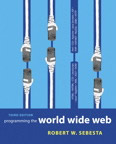
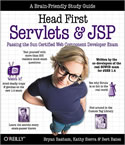
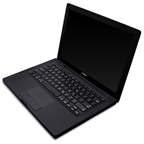
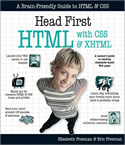





Robert W. Sebesta, University of Colorado, Colorado Springs
ISBN: 0-321-30332-6
Publisher: Addison-Wesley
Copyright: 2006
Format: Paper; 672 pp
List Price: $83.20
UD Bookstore New: $83.20, Used: $62.40
This book covers a wide range of topics in Web Development, including some coverage of almost all of the main web related technologies.
Sebesta will be our main text for the following topics: HTML and XHTML, CSS, JavaScript, Dynamic HTML, XML (including DTD and XSLT), and Database Access using SQL, the MySQL database, and using JDBC with MySQL.
This text will be in a secondary role for the following topics: Servlets and Java Server Pages (JSP).
Also covered in this book are the following topics that we may or may not cover, depending on available time: Java Applets, XML Schema, Perl, Perl CGI Programming, PHP, ASP.NET, Database Access using Perl and PHP.

Passing the Sun Certified Web Component Developer Exam
By Bryan Basham, Kathy Sierra, Bert Bates
First Edition August 2004
Publisher: O'Reilly, Series: Head First
ISBN: 0-596-00540-7
886 pages, List Price: $44.95 US
UD Bookstore: New $44.95, Used: $33.75.
This book will be our main text for learning Java Servlets and JSP, and associated technologies including the Tomcat servlet container, the MVC design pattern, EL (Expression Language), the JSP Standard Tag Library (JSTL), and web app security.
You are likely to find this book is very different from most textbooks you have encountered. At first glance, you might see all the wacky cartoons and pictures, and think this is a "xxx for dummies" style book. Don't be fooled. This book will challenge you to think more than most.
Look over pages xix through xxvii in the "preface" (I know—the part nobody ever reads). It answers the question "We know what you're thinking. How can this be a serious programming book?" What you read there may help you not only understand how this textbook works, but also help you understand how your brain works (which might be even more useful than learning about servlets).
This course will be taught using Problem Based Learning (PBL). If you haven't experienced it before, it is very different from what you are probably used to in most college courses.
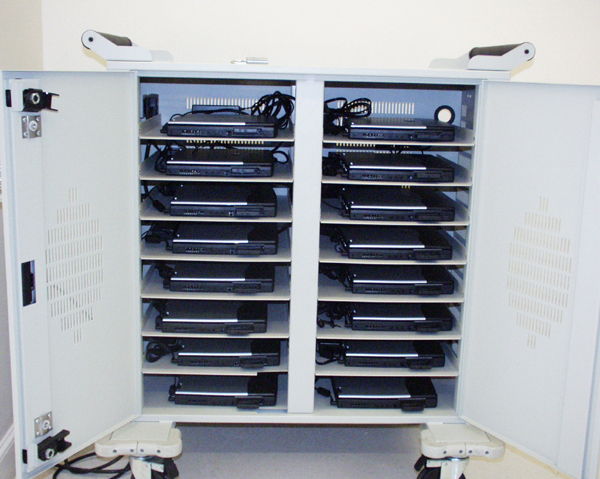
Most college courses are delivered in lecture format. The instructor talks, and you listen. (Or not.) There may be some back and forth discussion, but even then, the discussion in centered around a dialog between the instructor, and usually, at most, one student at a time. So, most of the time, you are an observer, not a participant.
In a PBL classroom, you will much more often be doing something. Typically, you've been given a "problem to solve" (hence the name, "Problem Based Learning". You'll sometimes work alone, but more often you'll be working in groups. My job as the instructor is to give you a problem to work on, help you get started, help you when you are stuck, and occasionally lead discussions based on what you've learned from working on the problem.
So, since this is a web development course, you typically are going to need a computer to get much of anything done. You'll also use the laptops to record the results of discussions with your classmates, and to look things up on the Internet.
This also explains why our course is meeting in Memorial Hall 110. You'll notice that there are seven desks shaped like hexagons (which gets interesting, since we are likely going to have 9 or 10 groups). Memorial Hall has sixteen laptops (the picture shows them in their "recharging cart" available in the classroom for shared use. There is a web page with information about the use of these laptops.
However, if you have your own, you'll probably find it helps to bring it to class with you; you'll get started working more quickly, and you'll always be guaranteed to have a place to work. Your teammates will appreciate it too.

By Elisabeth Freeman, Eric Freeman
First Edition December 2005
Pages: 694 (More details)
This book isn't required—the Sebesta book contains chapters on HTML, XHTML and CSS. However, this book covers the same material in a way that is much more visual, entertaining, and engaging. After you spend some time with the Head First Servlets book, if you appreciate that style of presentation, you may want to consider getting this book as well. If you still aren't sure, try the sample chapter.